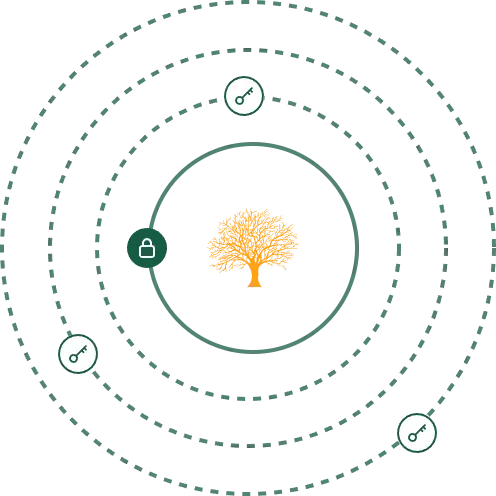Bitcoin Financial Services Built on Multi-Institution Custody
Onramp Is Your Trusted Bitcoin Partner
Where Security Meets Simplicity

Multi-institution custody
A fault-tolerant security model for protecting your Bitcoin for generations.
Learn moreMulti-Institution Custody
Secure, simple and always in your control
Multi-Institution Custody ensures your Bitcoin is securely stored in a vault protected by three separate keys secured by three separate institutions.
- Each key is held by a different institution, ensuring no single entity can move funds independently
- Transactions require approval from a quorum of keyholders (2 out of 3 keys)
- You maintain full control, as only you can authorize the keyholders to sign
- This structure provides enhanced security and autonomy over your assets

A best in class user experience
Buy, sell, deposit, or withdraw—all from one secure, intuitive dashboard. Track vault, trading, and cash balances in real time. Set up your inheritance plan to protect your wealth for generations.
Products and services
Onramp offers a comprehensive set of financial solutions
Multi-institution custody
Secure, fault-tolerant custody solution offering transparency, control, & no single point of failure.
Bitcoin trading
Seamlessly buy & sell bitcoin with access to industry-leading rates & liquidity.
Lending
Unlock liquidity through non-rehypothecated lending options with competitive terms.
Inheritance & estate planning
Plan for the future with comprehensive inheritance & estate planning, ensuring your assets are passed on securely.
Bitcoin IRA
Unlock the long-term potential of bitcoin within tax-advantaged IRA accounts.
Investment fund
Security-like exposure to bitcoin through Onramp's trust vehicles built on Multi-Institution Custody, offering in-kind subscriptions & redemptions.
Our trusted clients
Account tiers
Accounts scale based on your needs and goals
Still unsure?
Schedule a consultation with our team to discuss the options.
Subscribe to get Onramp's research and insights
Subscribers get access to Onramp's weekly Bitcoin research and insights from industry experts.

Are you ready?
The best security available for your Bitcoin without the technical burden. It’s time to upgrade.
